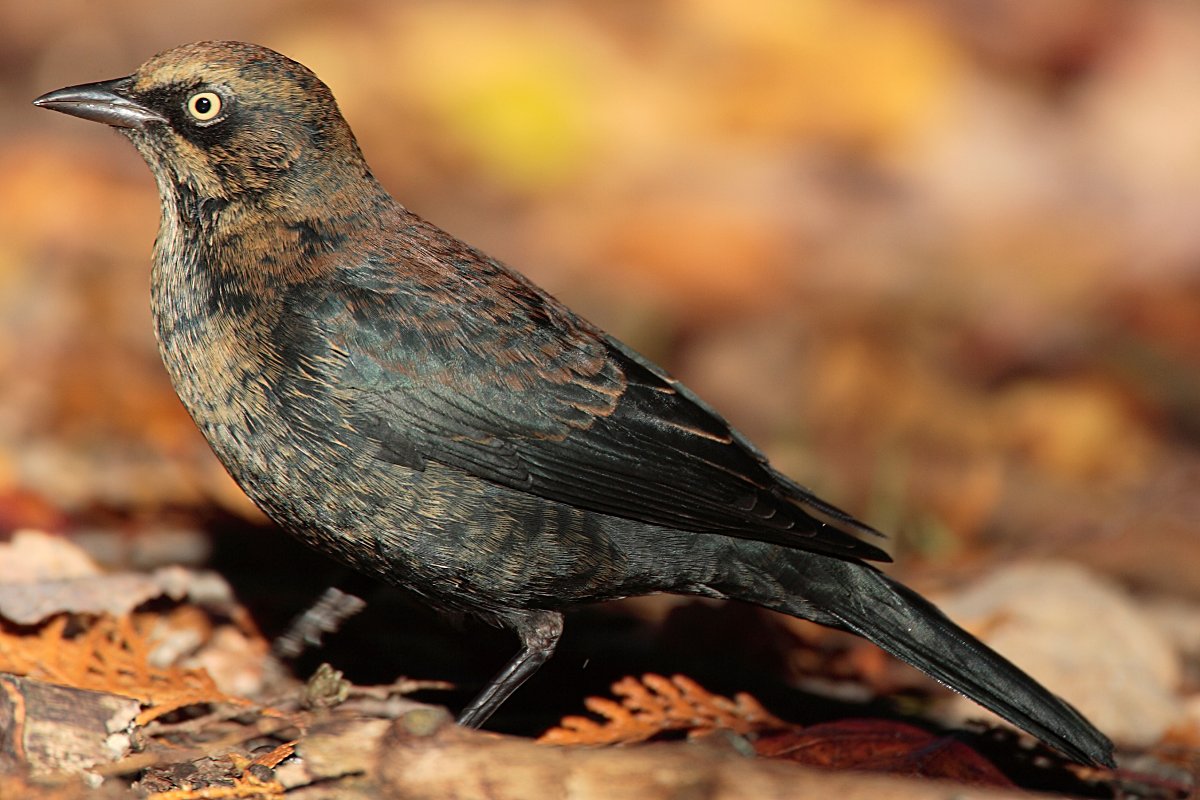As far as I know, my flashbacks are not products of Post Traumatic Stress Syndrome or past abuse of drugs. Because they're not Hunter S. Thompson-weird, I pretty much enjoy them, especially when I can figure out what clash of current events triggered it. This week our weather was instrumental. The last few days have been slushy, sleety, icy . . . pick any precipitation type, mash it with temperatures hovering around freezing, and we've got it. It is no wonder that reading Greg's post at Conservation Conversations about a recent trip to the Branson, MO area threw me back to my own winter experience there. I am surprised and mildly disturbed at my near-complete lack of note taking about the trip, so I'm really going straight from memory and a few recent Internet searches.Dateline: 15 February, 1995, Table Rock Lake, MissouriI will always remember that my phone number in Fayetteville ended in -8563, an easy-to-remember pattern on the key pad. Start at the middle-bottom, up a row, jog to the right, then up a row. Unfortunately, it just so happened that in our area you could dial 555 (or something) - "T-I-M-E" to check the time, our phone number spelled "T-J-M-E," and a lot of people are really bad dialers. Or spellers, I'm not sure which.
Lemons, lemonade. We got a lot of phone calls at all hours, but we (mostly) cheerfully gave people the time and had entertaining conversations with complete strangers. Most everyone was friendly after they got over the surprise that we weren't recordings.
File that information for a moment, on to the weather. Please correct me if I'm misremembering, but February always seemed to be the transitional weather month in the southern Ozarks. We had warm evenings where we'd sit in an old field and listen to American Woodcocks display, we had cold snaps with ice. Sometimes snow, but mostly ice. Like the fabled box of chocolates, you never knew what you were going to get.
 In spite of the covering of ice, a Dark-eyed Junco still enjoys a
In spite of the covering of ice, a Dark-eyed Junco still enjoys a
brush pile. This photo comes from our recent ice storm, which
was reminiscent of ice storms that hit us in Arkansas.One particular morning in mid-February we didn't have class, a layer of ice covered our town, and a couple friends and I were debating if (well, more like where) we should go birding. What should our focus be, waterfowl? Sparrows? Raptors? Then came the phone call, a woman who was glad to find out the correct time, but who also provided a piece to our puzzle. When she mentioned she was calling from Eureka Springs Rob interrupted to ask about the road conditions, which she reported were fine. Something was clearly going on in Rob's mind.
After hanging up Rob dangled the idea about chasing the
Yellow-billed Loon that was being seen on Table Rock Lake, a destination that required passing through (or at least near) Eureka Springs. If the weather was better a couple hours away, Rob proposed, we should go there. Perfectly logical, we agreed, and a Yellow-billed Loon? A species that shouldn't be anywhere near Arkansas? Shouldn't we go for that regardless of weather?
 Another image of our recent ice storm, which
Another image of our recent ice storm, which
took down an already-dying White Birch.Known as a White-billed Diver to our British friends, these high-arctic breeders should be nowhere close to southwestern Missouri. From what was "known," they should barely be reaching coastal Washington. What was this bird doing halfway across the country? It hadn't read the field guides.
And here's the kicker. This wasn't a recent sighting, the bird had been around for weeks. In fact, it had likely been around for years, returning each winter. Chris Lundberg discovered a Yellow-billed Loon on Valentine's Day 1990, which stayed until May. Chris refound it that December, possibly (probably?) the same bird returning to its wintering ground. Chris found the same species, possibly (probably?) the same individual, again in December 1991. I'm not sure if anyone was looking, it seems to be unreported or unobserved in 1992 and 1993. But in December 1994 Chris found the bird
again, and it was still reported in mid-February of 1995.
Actually, starting in the 1980's, more and more Yellow-billeds have been photographed in locations well inland from their expected winter range, such as Idaho, Colorado, Texas, Arizona, New Mexico, Illinois, Minnesota, Arkansas . . . . This leads to a fundamental question: is the species actually expanding its wintering range, or are we simply getting better at identifying loons in basic (wintering) plumage? From the
BNA Online account,
Many of these (inland) records were from manmade reservoirs that represent new potential habitat for this species. The recent discovery of these birds, however, probably stems from new information on field identification of basic-plumaged loons that has only recently become widely available.
This is where my note taking failed me. I have no notes written for this trip, just a single bird entry into my now-ancient version of Thayer's Birding Software. I remember the drive to Table Rock Lake being slow and dismally slushy, lots of downed branches and wires as we left Fayetteville. The weather didn't get better, but the conditions got less icy as we crossed the border into Missouri. Rob's detailed directions to the boat ramp in Table Rock Lake State Park guided us to the most reliable spot to watch for the bird.
 Yellow-billed Loon (juvenile). Note how the lower mandible is not
Yellow-billed Loon (juvenile). Note how the lower mandible is not
straight from head-to-tip, but abruptly bends towards the upper
mandible. This gonydeal angle is not found on Common Loons.
Photo from the California coast, 2006, by Len Blumin.We were prepared to stand here and watch for however long it took for the loon to appear, even though we were ill-prepared to stand in the wet, cold drizzle, the kind of damp that penetrates your bones. The reports suggested this bird favored the cove between the boat ramp and a stretch of land jutting out into the lake south of the marina. Given enough time, we were told, it will return. Just be patient.
There wasn't anything on the lake that I remember, other than water droplets. I certainly didn't list any other birds (not a coot? Not a Bufflehead? Not even a Mallard?). But I also remember the drizzle barely had time to coat the scope's lenses when a bird popped up almost in front of us. Unbelievably, we were only a few dozen feet from the Yellow-billed Loon, a species that the
annotated checklist kept by the Missouri Bird Records Committee lists as Winter Resident, Accidental (1-4 records, a vagrant).
Like many species, the winter plumage (definitive basic for the ornithologically accurate) isn't as flashy as the breeding plumage (definitive alternate), but what a distinctive bird. The bill was massive, oddly-shaped (compared to a Common Loon), unmistakable. I have vague memories of Rob, a much more experienced and more detail-oriented birder than I was, talking us through diagnostic features. I don't remember any of them, though, just that the bill was huge! As someone described this species, it's like it has a banana stuck on its face.
 A beautiful head-on view, look how wide the bill is! Also note a
A beautiful head-on view, look how wide the bill is! Also note a
diagnostic feature: the culmen (top of the upper mandible) is
yellow, not black like a Common Loon. Photo by Len Blumin.
 A winter-plumaged Common Loon for comparison, note the dark
A winter-plumaged Common Loon for comparison, note the dark
culmen and the not-so-bent lower mandible. Photo by Len Blumin.We had plenty of time to take in the bird, study it, watch it dive for extended periods only to appear hundreds of yards away. It was one of those birds that didn't leave you, eventually we had to make the decision to leave. We were soaked, we were cold, but we were fulfilled. On the way back we did two things I distinctly remember. First, a stop at the fish hatchery under the dam where we watched gulls. I don't know what gulls, but Rob annotated the various plumages as we watched, leaving me to feel as though I was starting to get a handle on gull identification. Second, a long stop at an Atlanta Bread Co., or was it St. Louis Bread Co.? Or San Francisco? Do those even exist anymore? Regardless, it was among the best, hottest soup-in-a-bread-bowl a cold, wet birder could find.
 The Rusty Blackbird seems to be a species that has been slipping under the radar. Maybe it's because they spend much of their time inaccessible to most birders, breeding far north in boggy boreal forests, wintering in swamps and wet woodlands, and not typically flocking with the other "nuisance" blackbirds. Part of it may be because they aren't as charismatic as other flashy passerines. Whatever the reasons, it's nearing tragic proportions, like the Passenger Pigeon and Ivory-billed Woodpecker before them: based on Breeding Bird Survey and Christmas Bird Count data, it's estimated their population has declined between 88 and 98% since 1966.
The Rusty Blackbird seems to be a species that has been slipping under the radar. Maybe it's because they spend much of their time inaccessible to most birders, breeding far north in boggy boreal forests, wintering in swamps and wet woodlands, and not typically flocking with the other "nuisance" blackbirds. Part of it may be because they aren't as charismatic as other flashy passerines. Whatever the reasons, it's nearing tragic proportions, like the Passenger Pigeon and Ivory-billed Woodpecker before them: based on Breeding Bird Survey and Christmas Bird Count data, it's estimated their population has declined between 88 and 98% since 1966.















